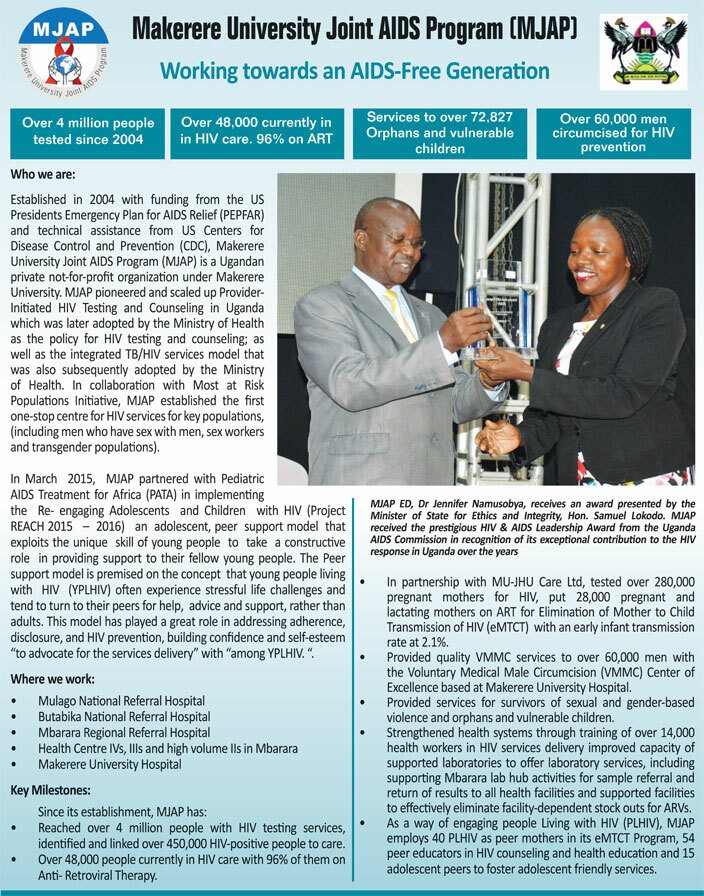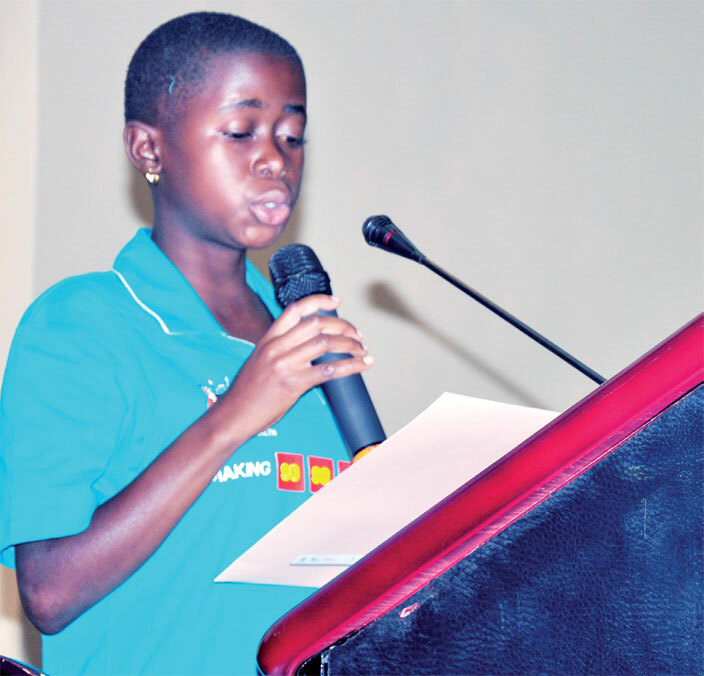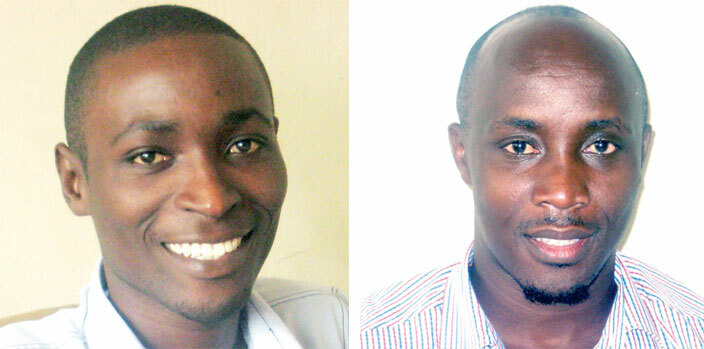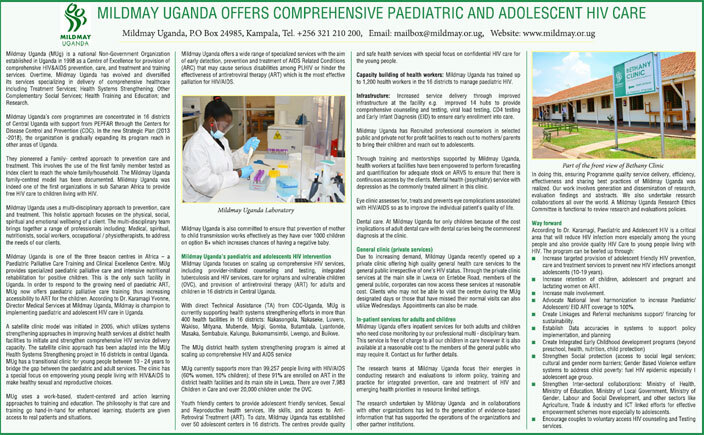Pediatric conference
Uganda has registered 86% reduction in new HIV infections among children
Prioritising care for children with HIV
By Jacky Achan
At the start of the national response to HIV, the focus was mainly on adults, observes to Dr Denis Tindyebwa Chairperson of the organising committee of the National Paediatric and Adolescent HIV conference.
"They (adults) at least had the money and could afford treatment. There was little knowledge that children could also be treated and respond to treatment just like adults," he says.
There was, therefore, need to inform the public of the benefit of treatment even for children and adolescents. Dr Cordelia Katureebe the National Coordinator for both Paediatric and Adolescent HIV Services at the Ministry of Health says at the time over 27,000 babies were born with HIV annually.
"There was a need to create awareness about the alarming statistics of children still being born with HIV. We developed a need to advocate for high level discussion about the plight of children and adolescents infected and affected by HIV/ AIDS," she says.
Paediatric experts that had been providing care for children and adolescents that were living with HIV tabled their concerns at the national subcommittee for paediatric and adolescent HIV care as well as to Ministry of Health calling for national dialogue on HIV care for children and adolescents.
The idea was agreed to and the conference was started as an annual event, and later every two years. For the next three days starting today, the eighth national conference that has attracted over 700 participants from all over the country mostly health workers, doctors, nurses from all districts providing HIV care and treatment will convene in Kampala at Hotel Africana under the theme: Closing the gaps in paediatric and adolescent HIV: Making 90-90-90 target a reality.
Also to attend are programme managers on HIV in the country and youth selected all over the country
State of HIV among children
Uganda registers an estimated 33 new HIV infections per day among young people between the ages of 15 and 24 years. According to the 2015 national statistics 78,295 adolescents between ages 10 and 19 were living with HIV. New infections among the same age group stood at 9,276.
However, comprehensive knowledge of HIV, as well as prevention and treatment services among young people, remains low. Last year, adolescents who had an uptake of viral load test stood at 21%, but those who had been retained on antiretroviral treatment for the 12 months stood at 79%.Those who had viral repression stood at 75.2%.
First conference
According to Dr Tindyebwa, the first conference aimed at championing early identification of children with HIV, early treatment and preventing mother to child transmission of HIV. However, he says the general objective has always been to increase awareness, focus on availability of new remedies to prevent infection among children and share research on HIV. The conference is used to share research from different parts of the world.
"When we present the findings, the Government adopts them for the benefit of children and adolescents," Tindyebwa says. He further explains that most adolescents have grown and need attention. "It is the adolescents getting more infection and losing the battle to HIV more than any other age group in the country," he says.
Key action points
- There is need for more financial commitment from the Government and donors
- Increased advocacy and visibility for paediatric and adolescent HIV care
- Involvement of adolescents in their care through planning, recognising their role in advocacy and peer support.
- Improved treatment options for HIV infected children that promote better adherence to treatment.
Implementation
Katureebe says to a large extent the key action plans of the conference have been implemented and have benefited children and adolescents. There exists a national officer at the AIDS Control programme who is in charge of adolescent HIV care and treatment services.
"This role provides guidance on policy, guidelines as well as co-ordination of adolescent HIV care services," she says. The country has also identified champions to spearhead key programmatic areas where advocacy and visibility were needed.
The First lady, Janet Kataaha Museveni is championing the Elimination of Mother to child transmission (EMTCT) programme. In addition, King Oyo of Toro has been named as a UNICEF/ UNAIDS Global Health Ambassador with a specific focus in leading commitment towards HIV/AIDS prevention among young people.
The country has also effectively rolled out the Test and Treat strategy to all health care facilities and over 95% of children at the health facilities are on anti-retroviral treatment. Viral load testing was also scaled up as the best way to monitor children and adolescents on anti-retroviral therapy.
Gains registered
According to Katureebe ever since the first conference, antiretroviral treatment coverage among HIV infected children below 15 years has increased to 62%.
Also the roll out of adolescent HIV care trainings nationwide has supported the development of knowledge and skills among health workers in adolescent HIV care and treatment Uganda has also registered 86% reduction in new infections among children.
She states over 80% of health facilities in Uganda are now able to provide paediatric HIV care and treatment services which is an improvement from 42%.
Issues raised
- The low paediatric antiretroviral treatment coverage,
- High number of children born with HIV in Uganda
- Lack of friendly paediatric treatment formulations
- High losses from care among HIV infected women.
- Low emphasis on adolescent HIV care in the country.
- Role of psychosocial support in HIV care programmes.
- Low level of HIV testing for children and adolescents.
- Issues on mortality among infected adolescents.

Hope:With treatment, HIV is no longer a death sentence
By Jacky Achan
Lubega Kizza, 24, grew up a total orphan having lost his parents to AIDS. "I grew up under the care of my grandmother in Luwero district. Basically, it was life between Luwero and Kampala as I grew up.
But in the year 2000, at the age of eight, I got to know my HIV-positive status. It was my grandmother who told me after I fell sick, got admitted and tested for HIV," he says. Lubega was started on treatment.
"It was a little confusing for me as a child, but I was started on treatment. In Senior Two, I decided to take a drug holiday that was. I would not miss any hospital appointment, but would go back home and not take the drugs. I was tired of them. The resultant effect was bad. I caught flu, but it put me down and it was a battle for me to recover."
Change of attitude
Lubega had to confess to his doctor what he had been up to (picking his drugs and not taking them). "I was put on psycho-social support (peer support), which encouraged me take my drugs. In Senior Four, I publicly disclosed my status.
I attended an HIV/AIDS conference in Kampala and shared my story. The media broadcast what I had said." Lubega's friends who had watched the televised broadcast could not believe it.
"There was commotion and a lot of talk at school. My friends thought I had been paid to share a story like that. At one point in school, I run to the back of the classroom because of the pressure my peers were putting me through to admit I had taken money to share my story. One of Lubega's close friends followed him to where he had sought refuge and he insisted he tells the truth if he had been given money to make up such a story," I told him I was telling the truth.
I then asked the headmaster, who already knew my status, to disclose my status to which he agreed. The bell was rang calling for an assembly, and there in front of the whole school, I disclosed my HIV positive status. Students embraced me and gave me all the support they could.
I felt great. My life got better. I did not hate myself any more. I started to share my status with communities and churches as a way of giving hope to people like me." Lubega also started to rally organisations and even got them to come to school to sensitise students on HIV/AIDS. "This helped me become a role model to others, working for my community and country."
 Sharon Tibawalana, who contracted HIV through blood transfusion at age fi ve telling her story
Sharon Tibawalana, who contracted HIV through blood transfusion at age fi ve telling her story
Lubega's future
Currently, Lubega works as Team Leader — Adolescent Peer Support at Makerere University Joint Aids Programme, which works in collaboration with Paediatrics Aids Treatment for Africa.
They run a clinic at their Kololo offices on the outskirts of Kampala, and Mulago Hospital plus several other clinics in different parts of the country. They offer counselling services, HIV testing and getting young people on treatment.
In January, Lubega who is the oldest of three siblings, will be graduating with a Bachelor's degree in Pharmacy at Makerere University. The sister who follows him is HIV-negative, while their last born brother is also HIVpositive.
"I am looking forward to getting a good job after graduating, getting married and having a happy family of my own. Having HIV is not the end of life, as long as I take my medicines and follow the doctors directives, life will go on until I reach my fulfilment."
Challenges for HIV+ adolescents
Kilonzo Ronald Mutua, the coordinator of orphans and vulnerable children care at Makerere University Joint Aids Programme, says adolescents between 18 and 24 years born with HIV have grown into adulthood and so have personal needs.
"They are in a state where they are neither adults nor children. We do not know what their critical needs are." We need to address issues such as relationships, reproduction health and career progress amid many economic problems."
It even gets more difficult for girls who conceive and give birth. "Because of stigma, girls become single mothers with no basic needs and support." We need collective, multifaceted and specialised efforts to address the need of adolescents going into adulthood and adolescent single mothers.
Prioritising adolescents' needs
Uganda registers an estimated 33 new HIV infections every day among young people between the ages of 15 and 24 years, yet comprehensive knowledge of HIV, as well as uptake of HIV prevention and treatment services among young people, remains low.
Mutua says differentiated care models can be used and also the patient-centred approach. The Makerere University Joint Aids Programme, which works in collaboration with Paediatrics Aids Treatment for Africa uses the collaborated peer approach.
It created a demand for service from young people. "When services offered are friendly, the uptake by adolescents is high because they can negotiate their appointment and come at a convenient time."
The friendly services also give adolescents opportunity to freely talk of their challenges. The peer approach has been used to retain young people on treatment and support. It started with one clinic, but now applied in 18 clinics.
 Lubega (left) is living positively. Kilonzo Ronald Mutua, the coordinator of orphans and vulnerable children care at Makerere University Joint Aids Programme (Right)
Lubega (left) is living positively. Kilonzo Ronald Mutua, the coordinator of orphans and vulnerable children care at Makerere University Joint Aids Programme (Right)
"When adolescents meet people of their own age with almost similar stories, it becomes easy for them to open up on topics such as sexually transmitted infections and reproductive health. We are then able to link them up with specialists who care for them, build their confi dence to express themselves and get tailor made treatment."
Lubega agrees the peer-to-peer model has enabled more adolescents open up to their peers about their HIV status and live a healthy life. In the past, youth would hang around gates, not even enter then leave. If they had trouble adhering to treatment, they would not even talk to the doctor, but come around and then go backhome.
If you go to any health facility you will see adults share easily with doctors, but it is hard for adolescents to do the same. They do not share easily unless they can relate with you. For those who are HIV positive, we tell them things are okay with treatment which is free and accessible. We know where to refer them, who they should talk to get care and live healthy.
We also encourage them to bring their boyfriends or girlfriends and friends for testing as we aim to attain the 909090 target. (testing 90% of the population, getting 90% on treatment and maintaining 90% on treatment to suppress viral load for them to lead a healthy life). For those who are negative, we implore them to abstain from sex, stay faithful or use condoms.
Gender issues
Lubega indicates more females seek support than their male counterparts. "Women are more vulnerable to HIV than men, but they seek help more than the men." Men like acting strong and passive and believe somehow they will heal when feeling unwell.
By the time they seek help their situation is critical. To increase the uptake of males seeking treatment, we are involving more male adolescents among our peer counsellors to champion in encouraging testing, treatment and living healthy.
Mutua says overall, there is progress because a good number of youth now have their viral load suppressed. Lubega says the fact that now they use the viral load instead of CD4 count to monitor HIV, it is diffi cult for one to get off drugs.
Mutua says they also have to successfully transition HIV positive adolescents from childhood to adulthood so that they are able to independently take care of themselves. However, we can build their capacity to manage their health, by understanding their needs such as reproduction and career.
The African Network for care of Children Affected by HIV/AIDS

MILDMAY Uganda offers comprehensive paediatric and adolescent HIV care

